We're All in Fractal Microcults
We now have an infinite number of ways to strongly disagree with someone
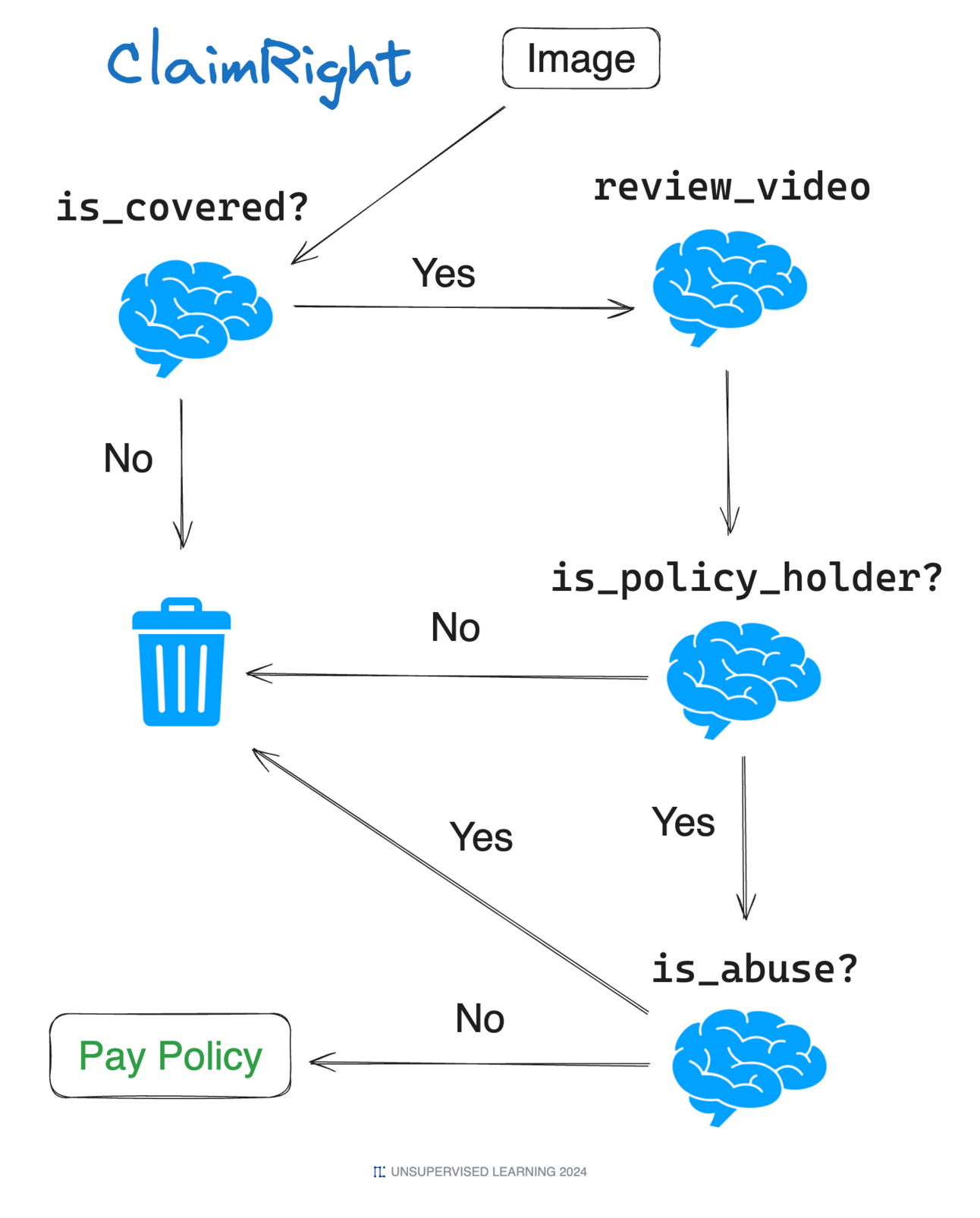
When I tell people that AI going to separate people into have's and have-nots, or multiply our global productivity by trillions of dollars, most don't believe me.
I realize now why that is. It's because most people don't have the right mental model for thinking about AI.
When most people think AI they think image generation or chatbots. And understandably so—since those were the first applications of what's now called GenAI.
But it's much better to think of AI as an Intelligence Pipeline.
What the hell does that mean?
Great question. An Intelligence Pipeline is a series of Intelligence Tasks that result in a useful output. And Intelligence Tasks are functions that can only be done using human intelligence.
Here are some real-world examples.
Before we get into these, let's highlight the point by doing something crazy. Let's completely abandon the word "AI". It's a silly word, and it means 100 different things depending on who you ask.
Instead I want you to think about people. Humans. And specifically, human workers.
So imagine a person—let's call them Chris—who works in a cube with a computer. Chris has a coffee next to him, and a small plant. And a picture of his girlfriend and his dog on the cube wall.
Chris works at a company called CutePup. CutePup finds pictures of cute dogs and puts them on the CutePup website.
Chis is a member of a Process Team that does one part of the company workflow. Here's the whole process.
determine if it's a dogDetermine if the dog is cuteDetermine what kind of dog it isSo the workflow looks like this:
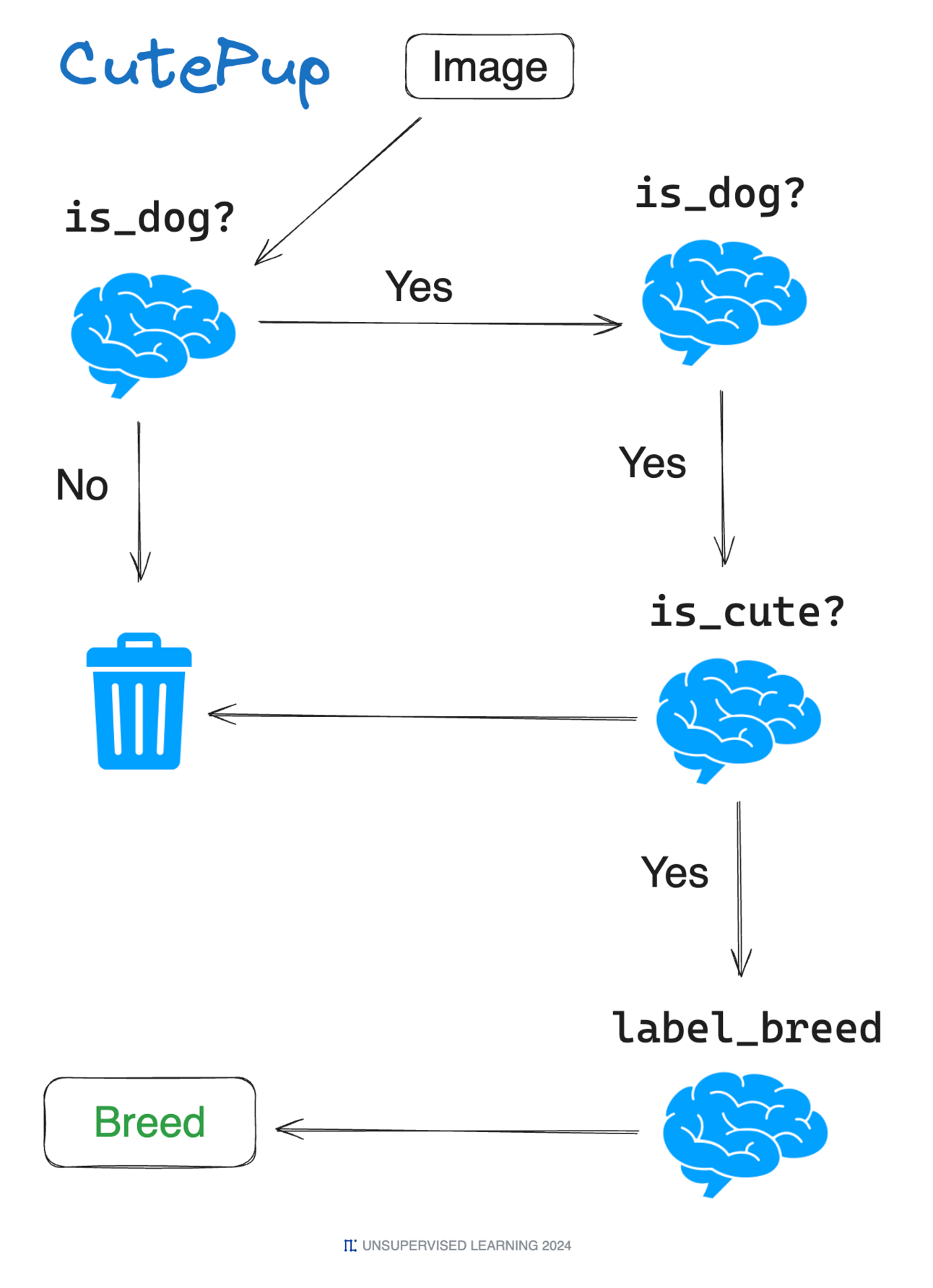
That's it. That's what CutePup does.
Chris is not alone in his building. He's in a cube farm with 48,912 other people.
Chris is part of the Process 1 team, so his job is to determine whether a picture is a dog or not. Here's what he sees on his screen all day:

This one is a cat, so Chris clicks on the No button.
Carol sits next to Chris. She works in Process 2. She only gets photos that Process 1 has determined are dogs, and she has a screen that asks her if the dog is cute or not.
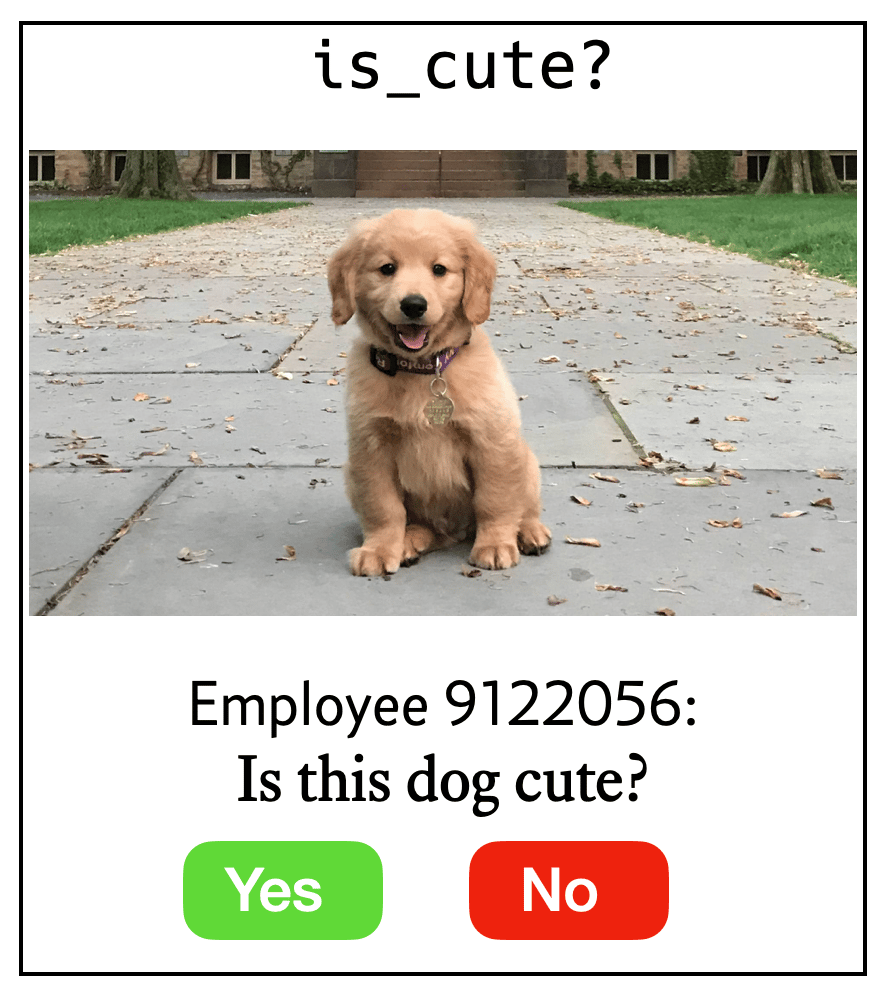
Next to Carol is Amir who works in Process 3. Amir is an expert on dog breeds.
When a dog pops up, Amir looks at it and types in the breed into a text box.
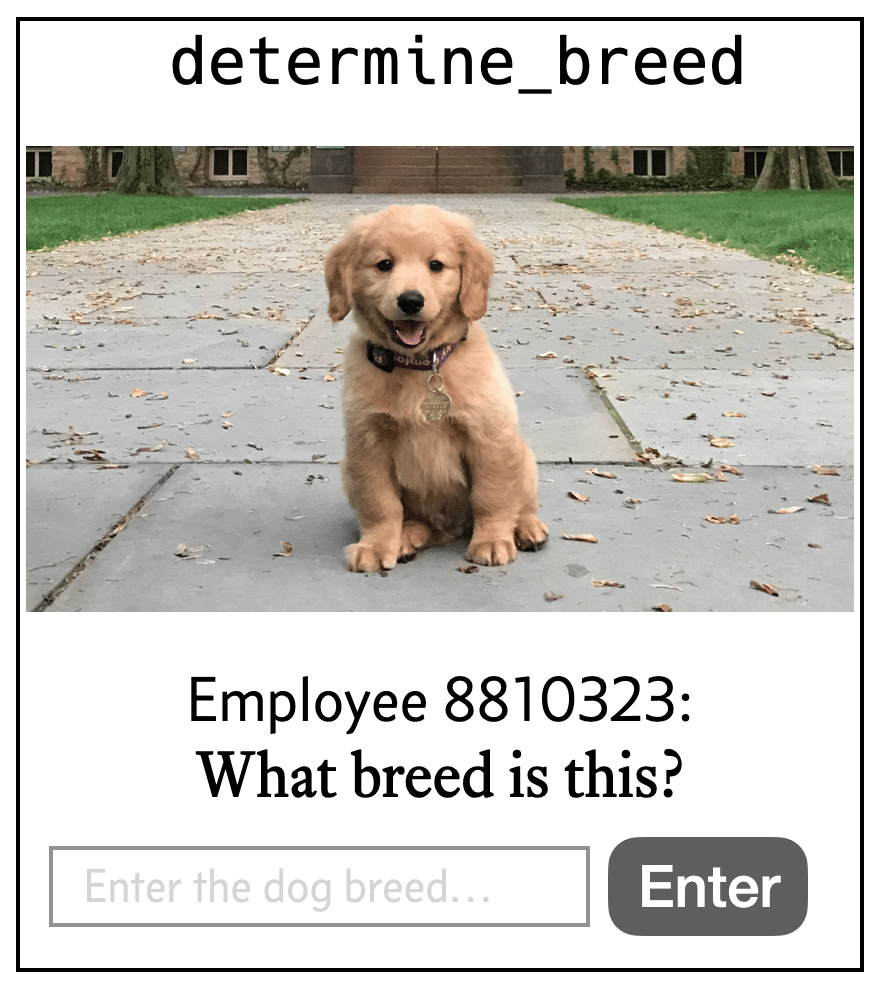
You might be wondering why we don't have computers do this.
Well, because they can't. You can't ask Python or C++ if something is a dog or not. Or if that dog is cute.
You need a human for that. You need Intelligence.
So, the CutePup workflow looks like this:
That's three different tasks that require human intelligence. That's an Intelligence Pipeline, and each node in the Pipeline is an Intelligence Task.
Let's look at more complex example.
ClaimRight is an insurance company that pays people out if their products wear out before they're supposed to. It's for all sorts of products, like scooters, tents, baby strollers, etc.
But they don't pay out if it's fraud or abuse of the product. Here's the workflow:

Kira works at ClaimRight, along with 349,219 other people in the Boise office. She has a plaque on her cube for 25 years of service. She's really good at determining the difference between wear-and-tear and abuse.
And she's not just good at it—she's fast. In her 8 hour day, not counting lunch and breaks and stuff, she can get through an average of 29 cases per day!
29!
That's 11 more than the median, and with an 89% accuracy rating, which is top 2% in the company.
Now let's look at something even more cognitively difficult.
Kevin works at Overseer. They're a military intelligence service company that sells intelligence reports to the US government. They specialize in watching all the military bases in a foreign country using satellite images, and then determining what that country is doing militarily.
Here's the Pipeline.
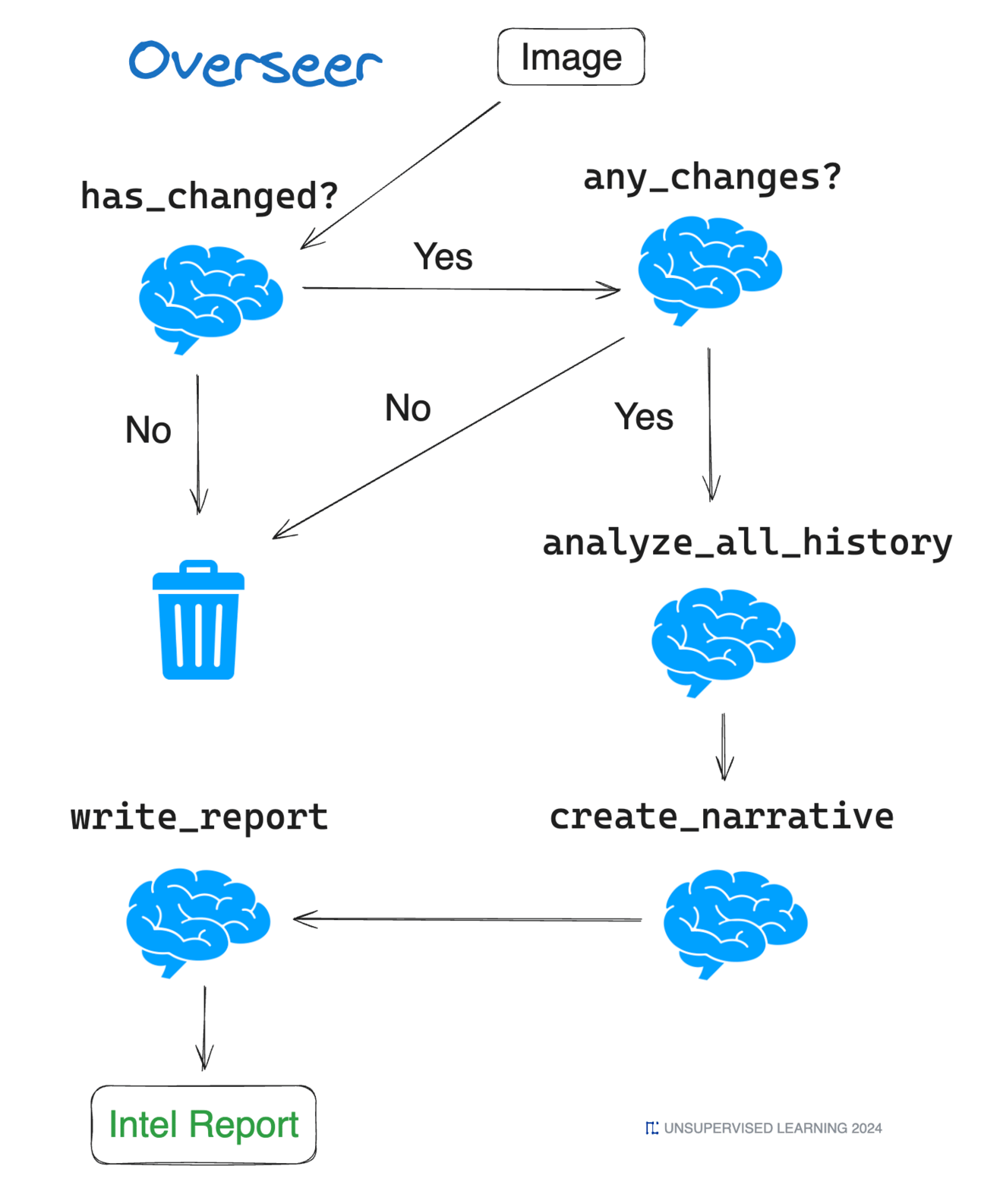
Kevin is an employee at Overseer, and he's kind of a genius. Among the 712,309 people who work at his company (there are hundreds of satellites and hundreds of places of interest to monitor), he's one of the few who can work in Process 2, Process 3, and Process 5. Plus he's pretty good at 6 and 7. Most people can only do one or two.
And like Carol at ClamRight, Kevin is super fast. He can actually do 9 reports per week! End-to-end if necessary. And his accuracy is off the charts at 86%.
Let's look at another example—this time in Medicine.
BadSpot is a company that checks for dangerous moles on people. You send in the picture and it determines if it's something you need to worry about.
Here's the BadSpot Intelligence Pipeline.
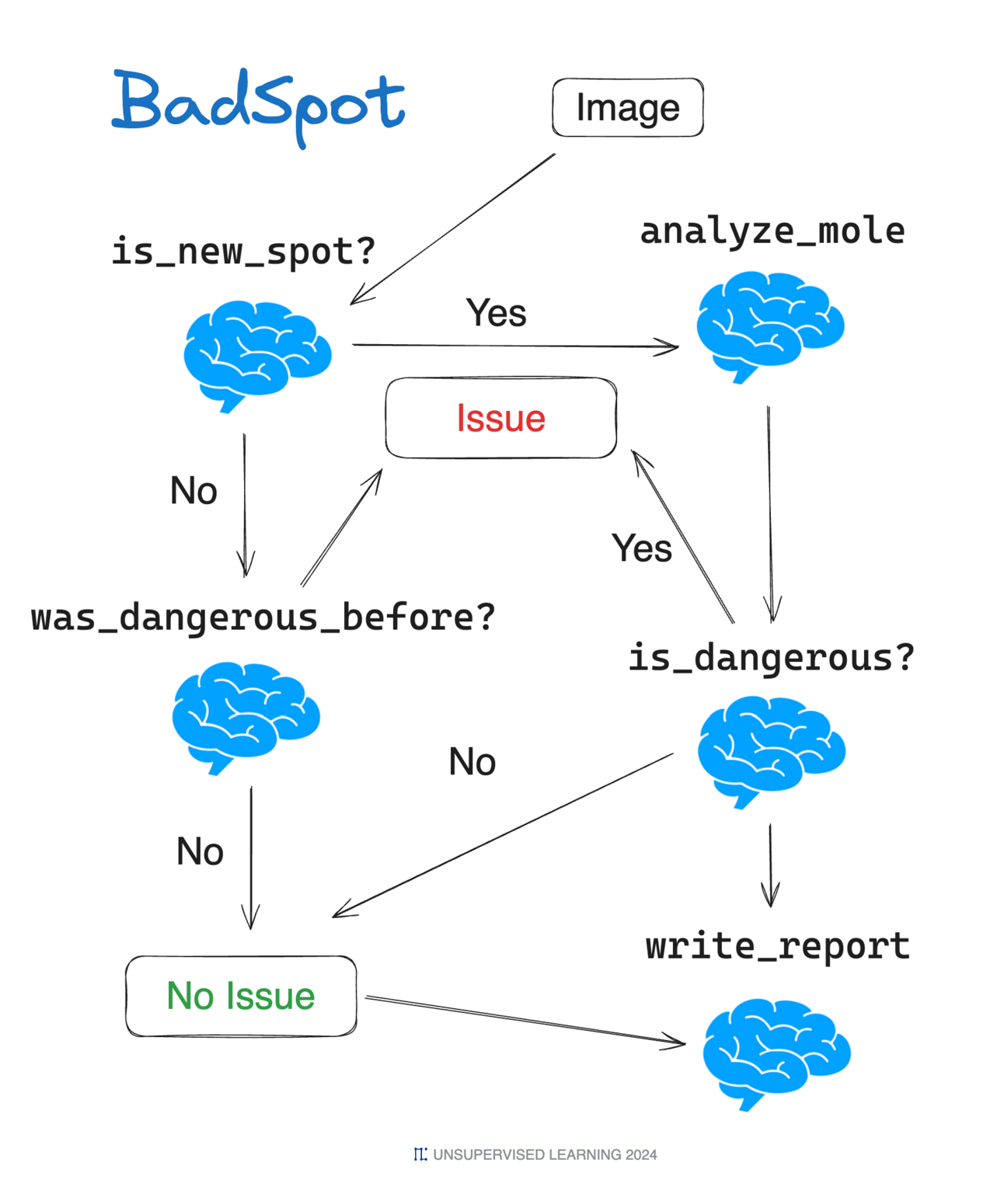
With CutePup and ClaimRight the stakes were pretty low. Maybe you get an occasional cat in your dog pics, or maybe the insurance policy pays out when it shouldn't have. No biggie.
But with Overseer and BadSpot, we're talking about military intelligence and health. So we're potentially dealing with people's lives.
And as you might expect, the level of expertise required is much higher. Think about the intelligence, knowledge, and experience needed to execute the Intelligence Tasks in these Pipelines:
One thing both of these Intelligence Pipelines have in common is that there aren't many people who can do the Intelligence Tasks involved. Like, there aren't many people who can do these things on the planet. We're talking a few a few thousand at most.
More on that later. First let's look at how common these types of Tasks and Pipelines are throughout society.
As it turns out, business is nothing but collections of these types of intelligence tasks and pipelines.
Here are a bunch more Intelligence Tasks we all recognize from the corporate world.
summarize_meetingsend_summary_to_stakeholdersread_reportproofread_documentcreate_meetingorganize_eventsolve_problemwrite_coderesearch_better_waycheck_for_security_issuescheck_peers_codeapprove_prread_complaintcheck_customer_historycheck_for_fraudcheck_current_policyrespond_to_customermake_customer_happyanalyze_molediagnose_diseasewrite_prescriptionanalyze_xrayassess_patientanalyze_mritalk_with_familyfind_sourcesrate_sourcessummarize_articlerate_articleextract_key_ideassynthesize_ideasperform_analysiswrite_reportsubmit_reportfind_fundinginterview_candidategive_performance_reviewmanage_budgetdocument_program_progresswrite_progress_updatecreate_progress_update_presentationdeliver_presentationbrainstormriff_on_ideaexpand_ideawrite_first_draftcreate_artwrite_proseAnd the list goes on…
The thing that unifies all these tasks is that you can't give them to a computer program to execute.
These are things that only humans can do. These aren't just work tasks, they're Intelligence tasks.
Now let's look at some similarities across all these tasks and pipelines.
Above we looked at four different companies: CutePup, ClaimRight, Overseer, and BadSpot—all doing various thinking-based activities that require human intelligence. And then we looked above at a whole bunch more examples of intelligence-based tasks.
Now that we've talked about them, let's look at what makes someone good or bad at these things.
Here are some attributes that make great employees in knowledge work.
I think these are solid attributes. Now let's collapse them into a few metrics.
So the metrics concept we'll remember as ITEM (EYE-tehm), and the metrics themselves we'll remember as KISAC (KAI-sack).
These are decent because they capture not only someone's ability to do a task (knowledge and intelligence), but also the performance of their outputs (speed and accuracy), as well as the cost of execution.
Right, so that was a lot of setup, and now we're able to make the main point.
The best way to think about AI—especially as it relates to business, the economy, and productivity—is to realize that AI is simply a way to execute all these various Intelligence Tasks better, more consistently, and cheaper.
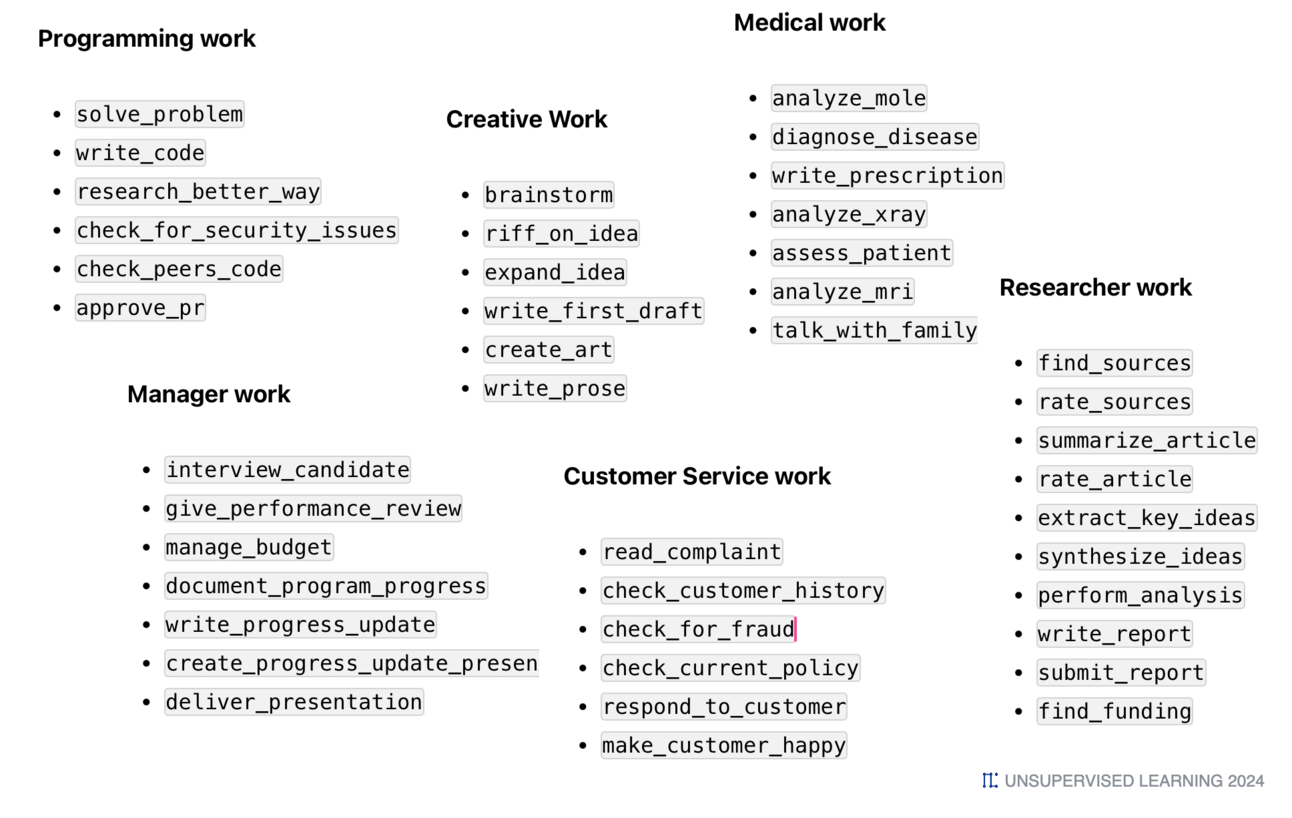
That's it. Forget all the other crap about AI.
Those are distractions.
What matters is how AI will help humans do actual work that otherwise humans would have had to do ourselves. And keep in mind—a lot of intelligence-heavy work isn't being done at all!
There are thousands of intelligence-based tasks that desperately need doing, but there simply aren't enough people to do them.
There are literally billions of people who don't have access to teachers, tutors, therapists, nurses, researchers, journalists, etc., and all the wonderful Intelligence Tasks that they are able to do.
The planet needs hundreds of billions of these Intelligence Tasks done every day, and there are very, very few people with the education, training, certification, or availability to carry them out.
And that's just for the stuff that nobody is doing. Now let's look at the work that's actually being done using the KISAC metrics above.
Here are the KISAC metrics again.
👥Humans:
🤖AI:
👥Humans:
🤖AI:
👥Humans:
🤖AI:
Keep in mind—this is just for a single AI instance, and most systems will have a fleet of them performing what a single human or a small human team was doing. So multiply those numbers by 10, 100, or 1000x.
👥Humans:
🤖AI:
get_smart —> retire —> retrain👥Humans:
🤖AI:
Earlier we were talking about how fast and accurate Carol was at her job.
And she's not just good at it—she's fast! In her 8 hour day, not counting lunch and breaks and stuff, she can get through an average of 29 cases per day!
29!
That's 11 more than the median, and with an 89% accuracy rating, which is top 2% in the company.
Now imagine an AI doing this same job but with the following metrics:
NOTE: These are just estimated numbers, but I think they're fairly realistic.
In short, humans will beat out AI in a few things for a long time to come—but for most Intelligence Tasks, AI is going to do 10-1000x the amount of work that humans can do—with as-good-or-better quality—for a fraction of the cost.
And again, this is not some theoretical or ambiguous work. This is the work we're all familiar with. It's the regular work we get hired at companies to do.
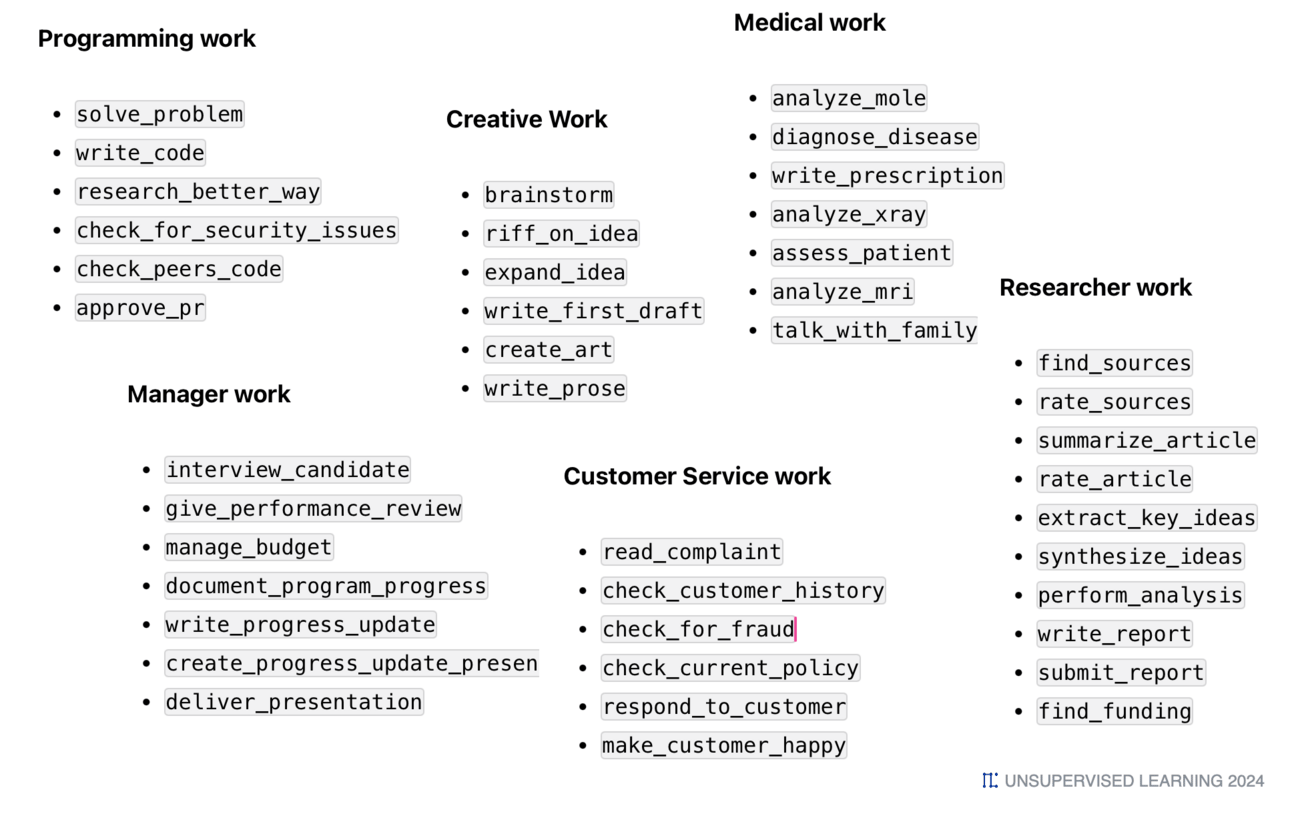
That is what AI is. And that is why it matters.